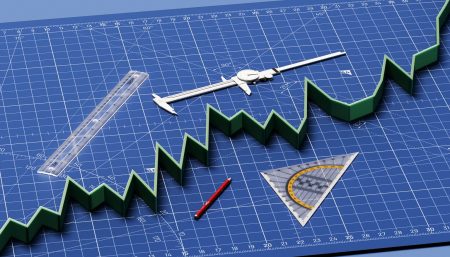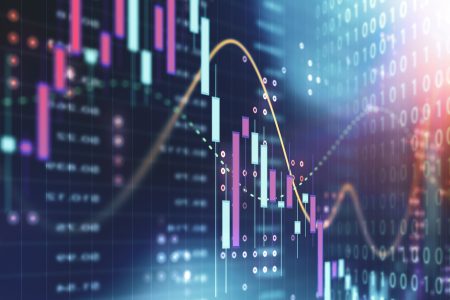Despite signs of a strong U.S. economy and markets at all-time highs, many people appear to be increasingly worried about their financial outlook, a phenomenon known as ‘vibecession.’ Brad Simpson, Chief Wealth Strategist at TD Wealth, discusses the divergence between market performance and investor sentiment.
Transcript
Greg Bonnell – Despite a strong US economy and markets sitting near all-time highs, many investors still have large cash positions. Well, our feature guest today says this divergence, we could call it the ‘vibecession’. Let’s dig into all this now. Brad Simpson, Chief Wealth Strategist at TD Wealth. Brad, great to have you back on the show.
Brad Simpson – Hey, Greg. It’s great to be here.
Greg Bonnell – So let’s talk about a vibe session. We know we were told there was going to be a recession that we didn’t get. Explain ‘vibecession’ to me.
Brad Simpson – Yeah. So I mean, I’m not taking credit for it. I think that it started to enter into the vernacular about a year ago. Let’s call it the summer of 2023. And really, the idea of a vibe session is ultimately about not what the facts are around how the economy is doing but how the economy makes you feel.
And so a vibecession is, forget the facts. How do you feel about– and you know, you’ve got to think that that is consistent often with, I think, our new reality is how, increasingly, how you feel about something is more important than the facts around something. Now, the problem with that, in investment terms, is financial markets ultimately move, equity markets move on having greater earnings down the road. And ultimately, how the economy is doing is usually a huge part of that of course.
And so facts around having an economy really do matter. And so if you look at it in those terms, that I think one of the things that are having a huge impact on investors is that the facts are that the economy in particular in the United States is pretty darn good. And you could almost go as far as to say it’s probably been great. And it’s probably made its way to good.
And so that we published a couple of weeks ago. And every once in a while, you publish something– and I publish a lot of stuff. But sometimes, you really like something. I really like this because it kind of took this idea of vibecession and said, you know, here’s two problems with this.
And the first one is– on the front cover, we had this telephone. And it said, just the facts. And the problem is that I think the phone, quite frankly, and the facts that we get for our phone, and let’s say social media, are really taking investors to a place that we know some of– there’s been social consequences. But I think there’s starting to be very financial ones.
Greg Bonnell – I want to ask you where the bad vibes are coming from because, I mean, this data is released all the time. The economy is growing like this. The labor market is resilient like this.
Brad Simpson – Why do we feel so–
Greg Bonnell – Like, where’s the info?
Brad Simpson – Why do you feel bad, right? And so I mean, I think there are many reasons for that. But I think if you looked at one that we kind of tackled, said, let’s look at this, this may be the elephant in the room– and that is the upcoming election in the United States.
And if you think, you have the world’s media center, and you have the world’s superpower. And I think we’re all aware of the turmoil and political angst that we have there. But ultimately, I think that angst and that kind of turmoil around it is starting to have an impact on investing. And the way we looked at it is, first and foremost, we took something called the Michigan Consumer Index. So this is a survey that the University of Michigan is doing all the way back to the 1942 and consistently, over and over and over again.
And so when they look at the questions that they ask and the response that they’re getting, they noticed, starting at the end of 2019, that when they were doing the survey, the way the questions were being answering, the tone started to change. And it got negative, and more negative, and more negative between 2000 and 2022.
Greg Bonnell – You can’t even blame the pandemic.
Brad Simpson – No.
Greg Bonnell – This is before the pandemic.
Brad Simpson – No, no, no. So this is ’20 to 2022 in the middle of the pandemic, sitting at home. And what we can see is that, on the one hand, you’re in this pandemic at home. On the other thing, you can see that the increasing usage of where are you getting your news– not so much on television, not so much on the newspaper, but more and more on social media. And even on the 60 plus, that skewed higher. And of course, the younger you get, the more and more it went up.
And so you look at today when you get a Michigan Consumer Index survey that comes out. On average, in the type of economy we’re in now, pre-pandemic, if you were in a similar sort of scenario getting those questions, that the score would be about 30 to 35 points higher than what was coming out as. And I think a lot of that has to do with, of course, reading that machine. But when you look at with the way the politics are running in the United States– there’s this famous quote from James Carville, the campaign manager for Clinton in the ’90s. He said, “It’s the economy, stupid.” And we’ve heard that a bunch of times, right?
Well, I mean both parties know this. Republicans are constantly talking about how terrible the economy is there. The Democrats, though, they’re trying to get re-elected and, on one hand, need to run on their track record. But they also got to seem like they’re empathetic. So most of the time, they’re talking about how terrible the economy is.
And so I think between the two of them, you have this negativity contest going on. And of course, that kind of skews to all information sources. And then we make this point like, look, imagine– think of yourself. Look at every dinner party you go to, any social event you go to. You get into Trump within the first five minutes almost anywhere, and then you’re talking most of the time about the US election.
And I think a lot of that ultimately, then, is that– and there’s other sources, of course. But I think that when you look at the facts around it and you look at, to your point, unemployment, 3.9%, 3.8%– look at GDP growth, 3.2%. Look at equity markets. Your opening here today– markets are a little bit soft today. The S&P 500 (SPX) is 5,200.
Greg Bonnell – Yeah.
Brad Simpson – Right? I mean, it’s put on $12–
Greg Bonnell – We don’t have much patience either, right? One day of a pullback, you’re like, oh, man, what’s going on?
Brad Simpson – Between October and today, the S&P 500 has put on $12 trillion of market capital. Like, stop and think about that for a moment. That’s wealth creation, right? All of those things, if you look at them, is that the negativity we have around this is– the bad news of it is that if you let that set, how you’re going to allocate, you’re going to sit in massive amounts of cash.
Greg Bonnell – Is that what we’re seeing? Let’s talk about that. What are investors doing right now?
Brad Simpson – Yeah, so you hear– and so I think when you look at what investors are doing is they’ve got one foot in and one foot out. So yeah, they’re participating in some of this movement. But when you look at money market funds in the United States, you look at money market funds in Canada, you look at brokerage accounts and look at investment accounts, look at bank accounts, and look at the high-teen percentage of cash that people have held on through over all this period based on that, it tells you something.
And the second part on that is that negativity in the price of it also highlights that one of the things that happens is with– where we’re getting this emotional news– and I put “news” in quotes– is that because this isn’t fact based, just because you think it’s so doesn’t mean it is so. And now with this and being impacted in financial markets, how do you counteract that?
One of the really neat things about my job is that I can oversee four giant investment platforms, all the movements of all the capital, what people are doing, how they’re thinking at it and looking at it. So actually, right before I came here today, I was in a meeting with one of the guys that I work with.
And we were having a discussion where we were looking at, what is the one determinant over the last five years that was the greatest predictor of return for our clients across our financial planning enterprise, our advisory, our counsel enterprise?
And we said, well, what is that law of gravity? What is the thing? Like, what is the Newton law that would be that? Asset allocation. I mean, I’ve said it a million times here. But you can look at that over a month and not so much, three months, and then all of a sudden, one year starts to correlate, three years. After five years, it’s all in. It’s how you have allocated.
Greg Bonnell – Is that the key here, to start thinking long term again? We were joking earlier about the fact that, one down day in the markets, you go, oh, man. But the amount of capital that is put on, is that the problem here, getting people to think life is long?
Brad Simpson – Yeah. Well, I think it’s two things. It is having a longer term time horizon. But I think when people hear that now, it’s almost like their ears close because it’s like your parents telling you to eat vegetables.
Greg Bonnell – Because one day, it’ll pay off.
Brad Simpson – You know what I mean? Right. So after a while, it kind of wears off a little bit until you eat nothing but hamburgers and French fries for a decade. And then you go, wait a minute. Now I understood what they were saying. I think that there’s two parts to that, is that, one, we do need to start broadening out our time horizons again.
Like, I mean, I think about when I used to build and do an investment presentation 20 years ago. I mean, you could walk through data and facts and ideas that would be a couple months old, and it would still be relevant in a way of looking at things. I mean, I almost have to do– when I do anything today, I have to have a team running behind me updating on the fly, what’s by the minute of the stat on that, right? And ultimately, nothing is going to build the trade-off of that.
The second part I think is the lesson is it doesn’t have to be just a long-term time horizon. I think it also has to be– you have to sit back. And I know we’ve talked about this here before in the past, but I just can’t tell you how important it is, is to actually sit down and take a look at your at your money when you’re investing and put it in some buckets. And a bucket of hay is that, instead of running at 20% in cash, you have that bucket that says, What is the amount of money I’m going to need over the next year if something really terrible happened? like whatever that is– a loss of life, a loss of my job, something very critical and terrible.
I need to have another bucket that says, in the next three years, where’s the capital I’m going to need? I need to have another bucket that says, five years from now, that bucket there, how am I going to allocate based on letting that money grow over that next five years and not worry about any of this noise?
And then I have to have a bucket out here that says, what is that long-term growth where I’m not worried about getting access to that money, what that’s going to look like, and allocating to that? And I can tell you consistently, over and over again, if you do that and look at it in these terms, take that phone, put it away somewhere, take that person on Instagram, who on the Instagram the thing before they did that they dumped a can of paint over their head, and now all of a sudden, they’re talking about what the market’s going to do next– and if you ignore those folks and follow and do something along those lines, it’s going to make all the difference in the world.
Original Post
Read the full article here











